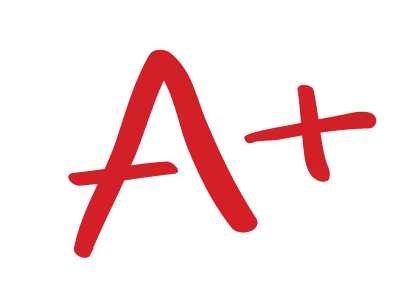Introduction
WRITE THIS ESSAY FOR ME
Tell us about your assignment and we will find the best writer for your paper.
Get Help Now!The Objective of the experiment was to measure gas transfer rates in three unique systems.
Gas transfer is an essential process that the current quality of life could not be without. Much of today’s life is dependent on these processes whether they know it or not. Gas transfer can be described as the process of separating gas from a fluid, or allowing certain gas to gasses to be dissolved into a fluid. The fluids pertaining to gas transfer have a wide range, but for this lab the fluid of choice will be water, and the gas will be oxygen. Gas transfers plays an important role in civil engineering; Particularly water treatment and wastewater treatment systems. Advances in technology have allowed us to reap many benefits from gas transfer processes; The main one being aeration.
Aeration is a large component of water treatment and wastewater treatment. There are many functions to aeration. Aeration can be used for a wide variety of issues in wastewater treatment. To name a few it can help eliminate odors caused by the formation of compounds such as hydrogen sulfide, it has the capabilities of being able to deliver oxygen to water for the treatment of active sludge, removing harmful organic and inorganic material from the water being treated, and raising dissolved oxygen levels in treated waterways to help aquatic life. In water treatment aeration can be used for removal of excess carbon dioxide, oxidation of ions like iron and manganese, and removal of taste influence from certain chemical compounds.
Dissolved oxygen levels are very critical to understand. If there is too much or too little dissolved oxygen aquatic life could be harmed. To reach the desired level of dissolved oxygen levels large scale diffusers and mixers are used to circulate the water because aeration is directly related to the the amount of surface are of the body of water. By causing rapid movement through a turbulent flow the amount of dissolved oxygen can be attained much more quickly. The temperature of the body of water is also a key factor. If a body of water is warmer it will be capable of holding less oxygen than if it was cold.
The amount of Dissolved oxygen can be calculated by Henry’s law:
where:
C = concentration of dissolved
Cs= concentration of gas under saturated situation
Kl= gas transfer coefficient
A = ratio of gas to liquid interfacial area to liquid volume
t = time
If the above equation is integrated with the appropriate limits at t=0 and = we get.
The experiment should be carried out in the following manner. First a set amount of liquid must be transported into a specified container while making sure not to cause too much of a disturbance in the water. Then set up the containers on the specified equipment. One of the containers will go on the bubbler and the other one will go on the mixer while keeping one on the side to compare your results from the other two. Two partners will record the dissolved oxygen amount while the other two will keep track of the time. The control beaker needs to be set up first since it takes the most time along with the mixer, and you can perform those two process simultaneously. After both of those are done and the data is recorded you can then begin on the bubbler. Keep in mind that initial and final dissolved oxygen levels should both be recorded along with initial and final temperatures. Readings will need to be taken in one to five minute intervals for slower systems and one to ten seconds for faster systems. Take 15 – 20 measurements to get a good amount of data for an analysis.
Apparatus and procedure
The following equipment was used to perform the lab: Dissolved oxygen meter (see in figure 7), deoxygenated water, 1000ml beaker, and a stopwatch.
The lab procedure took place as follows: Three beakers were filled with approximately 400 milliliters of deoxygenated water. Each beaker was to undergo a different type of aeration process to alter its oxygen content. The first beaker was to be gently filled with the deoxygenated water and was to be left alone as a control. The second beaker was filled with deoxygenated water as was to be set in mixer environment that would induce a whirlpool in the beaker. The third beaker was set up with a bubbler. Two people were assigned to record data. One would record the time and the other would record the dissolved oxygen concentration and temperature with the dissolved oxygen meter. The control was up first since it would take the longest. Taking readings from the control in five to ten minute intervals for the first 30 minutes before switching to the mixer while leaving the control alone to be exposed to the open air for later readings. After switching to the mixer data was taken in 30 second intervals for approximately 20 minutes. Then after finishing the data collection for the mixer data was collected for the bubbler. Data collection for the bubbler was collected in 15 second intervals for the duration of 6 minutes. To finish the collection of data the original controlled experiment was to be recorded for 30 additional minutes in 15 minute intervals. After the final reading was taken the data was shown to the instructor for approval of analysis. The instructor approved the data and allowed for the evaluation of the data.
Results
The data was organized into a table then graphed for evaluation. All the graphs and data did vary in their rates, but all of them did have an increase in dissolved oxygen concentrations with respect to elapsed time. Then analyzing the deficits of concentrations lead to finding the gas transfer coefficient. The control, mixer and bubbler ended up having very different values as far as dissolved oxygen concentration and gas transfer coefficients. With the control having the lowest, the mixer having the intermediate amount, and the bubbler having the highest dissolved oxygen concentration and gas transfer coefficient.
Introducing our Online Essay Writing Services Agency, where you can confidently place orders for a wide range of academic assignments. Our reputable homework writing company specializes in crafting essays, term papers, research papers, capstone projects, movie reviews, presentations, annotated bibliographies, reaction papers, research proposals, discussions, and various other assignments. Rest assured, our content is guaranteed to be 100% original, as every piece is meticulously written from scratch. Say goodbye to concerns about plagiarism and trust us to deliver authentic and high-quality work.



